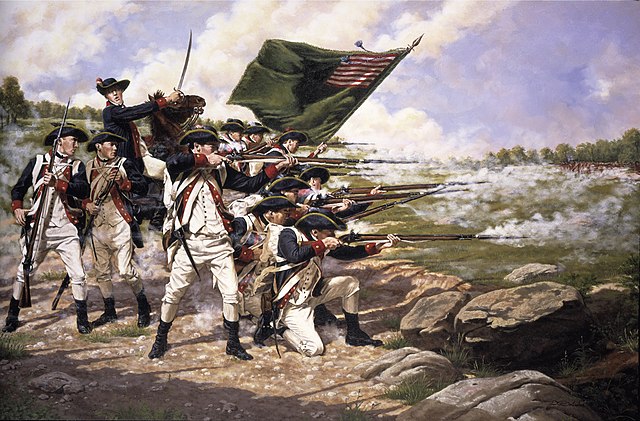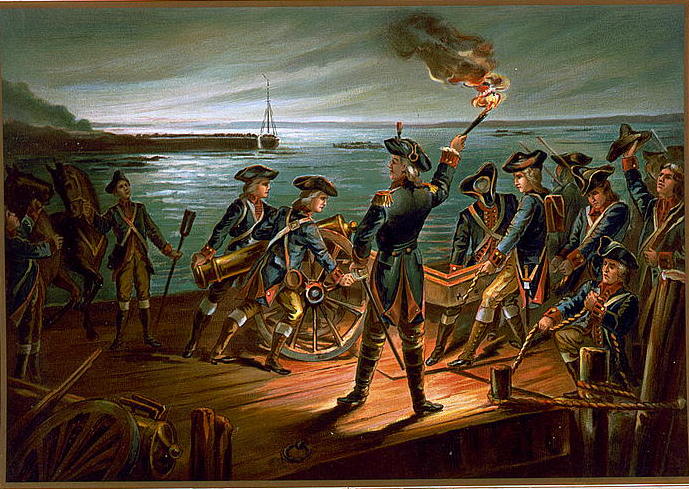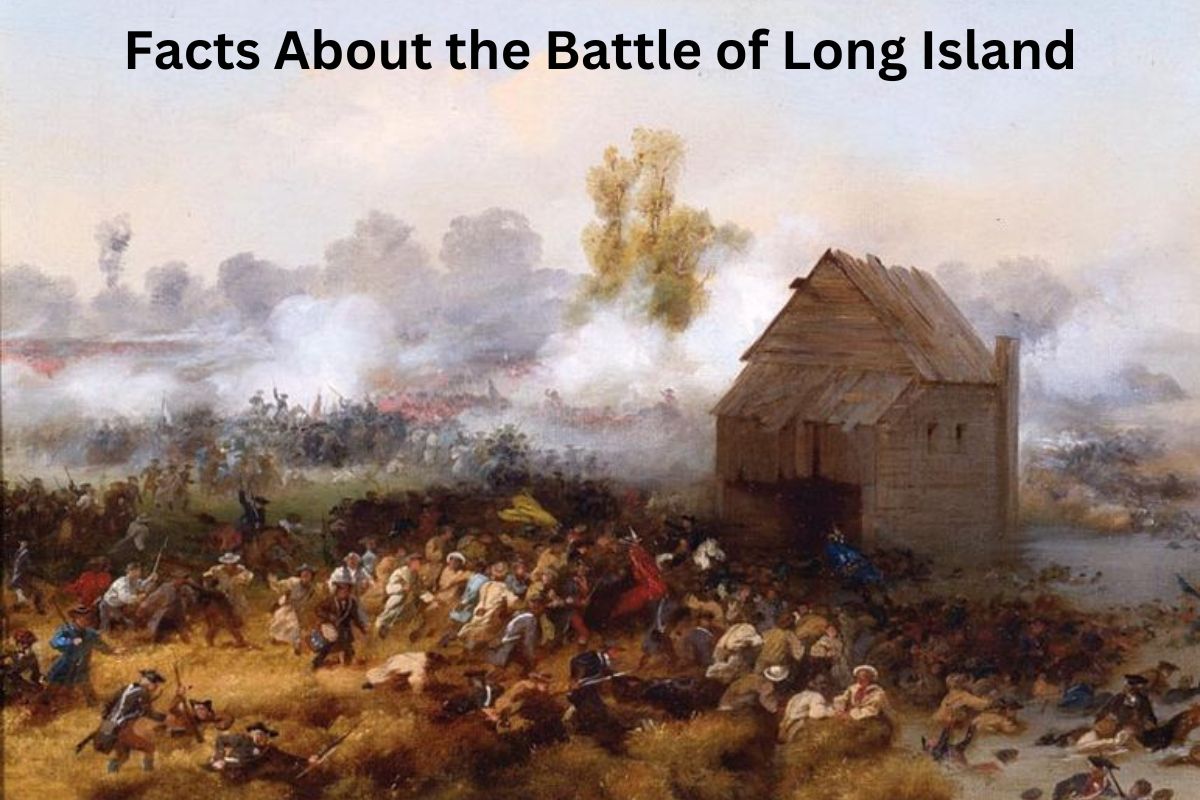The Battle of Long Island, also known as the Battle of Brooklyn, was a pivotal engagement that took place during the American Revolutionary War. It occurred on August 27, 1776, on the western end of Long Island, primarily in what is now the borough of Brooklyn in New York City.
The battle was the first major conflict following the signing of the United States Declaration of Independence, and it presented a crucial test for the fledgling Continental Army under the leadership of General George Washington.
Facing a formidable British force commanded by General William Howe, the American forces sought to defend New York City and thwart British efforts to gain control over the strategically important Hudson River Valley.
The Battle of Long Island marked a significant moment in the early stages of the Revolutionary War, demonstrating both the challenges faced by the American forces and the resilience that would shape their subsequent fight for independence.
Battle of Long Island Facts
1. The Battle of Long Island was the first major battle of the American Revolutionary War
The Battle of Long Island was the first major battle of the American Revolutionary War following the signing of the United States Declaration of Independence on July 4, 1776.
The declaration had declared the American colonies’ independence from British rule, and the battle marked a crucial test for the newly formed Continental Army.

2. The battle occurred on the western end of Long Island, primarily in what is now the borough of Brooklyn in New York City
The battle took place primarily on the western end of Long Island, which was then predominantly rural and sparsely populated. The area is now part of the borough of Brooklyn in New York City. The landscape consisted of rolling hills, open fields, wooded areas, and a few small villages.
3. British forces, under the command of General William Howe, sought to capture New York City and gain control over the strategic Hudson River Valley
General William Howe, leading the British forces, aimed to capture New York City and gain control over the strategic Hudson River Valley. Controlling New York would enable the British to cut off New England from the rest of the colonies and potentially divide the American forces.
4. The Continental Army, led by General George Washington, defended against the British assault
General George Washington commanded the Continental Army and was responsible for defending against the British assault. At this early stage of the war, Washington faced numerous challenges, including a lack of experienced officers, shortages of supplies and weapons, and the need to build a cohesive fighting force from various militias.

5. The British forces, including Hessian mercenaries, outnumbered the Continental Army by approximately 2-to-1
The British forces, under General Howe’s command, consisted of around 20,000 soldiers, which included British regulars as well as Hessian mercenaries from Germany.
Also Read: The Battle of Cowpens Facts
In contrast, the Continental Army numbered around 10,000 troops, primarily composed of volunteers from various states, each with varying degrees of training and experience.
The British had a significant numerical advantage, roughly 2-to-1, over the American forces. This numerical disparity would prove challenging for the Americans during the battle.
6. The battle began on August 22, 1776, when British troops landed on the shores of Long Island
The battle began on August 22, 1776, when British troops, led by General William Howe, landed on the shores of Long Island. They disembarked near the current-day location of the Verrazzano-Narrows Bridge and started advancing towards the American defenses.
The American forces, under the command of General George Washington, were stationed along the Brooklyn Heights, Gowanus Pass, and Jamaica Pass areas.
7. The American defenses on Long Island were focused on three main positions: Brooklyn Heights, Gowanus Pass, and Jamaica Pass
The American defenses on Long Island were strategically positioned to protect key access points and control the British advance. Brooklyn Heights, located on high ground overlooking the East River, was a crucial defensive position.
Gowanus Pass, a low-lying marshy area, provided a natural obstacle for the British troops. Jamaica Pass, further east, was another potential access point the Americans sought to guard.

8. On August 27, the main British attack occurred at the American center in the Gowanus Pass
On August 27, the main British attack occurred at the American center in the Gowanus Pass. General Howe launched a coordinated assault involving multiple columns, aiming to break through the American lines.
The American forces, led by General William Alexander (also known as Lord Stirling), fought valiantly but were eventually overwhelmed due to the overwhelming British numerical advantage.
9. Despite facing heavy casualties, General Washington skillfully managed a nighttime retreat across the East River
Despite the heavy casualties suffered by the American forces, General Washington skillfully orchestrated a nighttime retreat across the East River to Manhattan.
The retreat was executed on the night of August 29-30 and involved the transportation of soldiers, equipment, and supplies across the river using boats and small watercraft. The operation was conducted under the cover of darkness and was aided by a dense fog that blanketed the area, obscuring the American movements from the British.
10. The American losses in the Battle of Long Island were approximately 300 killed, 600 wounded, and over 1,000 captured or missing
The Battle of Long Island resulted in significant losses for the American forces. The casualties on the American side amounted to approximately 300 soldiers killed, 600 wounded, and over 1,000 captured or missing.
The British losses, in comparison, were relatively lower, with around 70 soldiers killed and 250 wounded. The disparity in casualties highlighted the challenges faced by the Continental Army, including the superior training and discipline of the British troops.
11. The battle demonstrated the discipline and effectiveness of the British troops and highlighted the challenges faced by the Continental Army
The battle underscored the effectiveness of the British military, as well as their well-coordinated tactics and superior firepower. It revealed the need for the Continental Army to improve its training, organization, and overall military capabilities.
The defeat at Long Island served as a valuable lesson for the American forces, prompting them to reassess their strategies and make necessary adjustments for future battles.
12. The Battle of Long Island was a significant setback for the American cause
Following the Battle of Long Island, the British forces successfully occupied New York City, which remained under their control for the majority of the Revolutionary War.
The occupation allowed the British to establish a stronghold in a significant urban center and further isolate the New England colonies from the rest of the colonies.
13. Following the battle, the British occupied New York City
Despite the setback at Long Island, the battle bought valuable time for the Continental Army. General Washington’s successful retreat across the East River allowed him to preserve a considerable portion of his fighting force.
This enabled the army to regroup, reorganize, and continue the fight for independence in the coming years.
